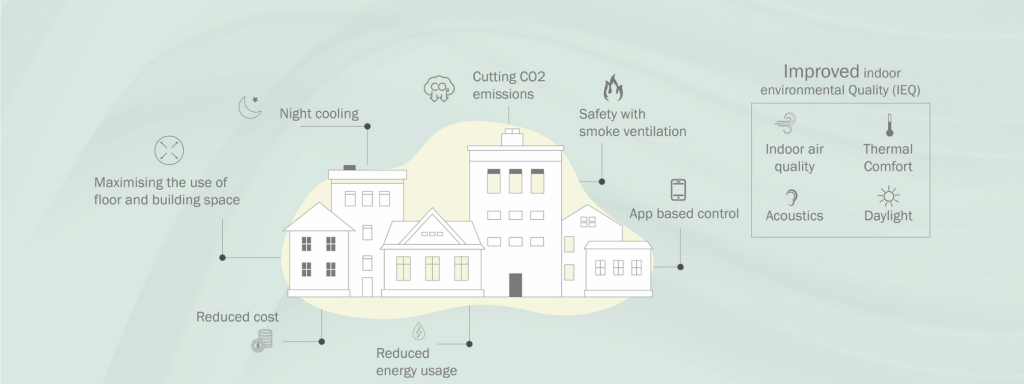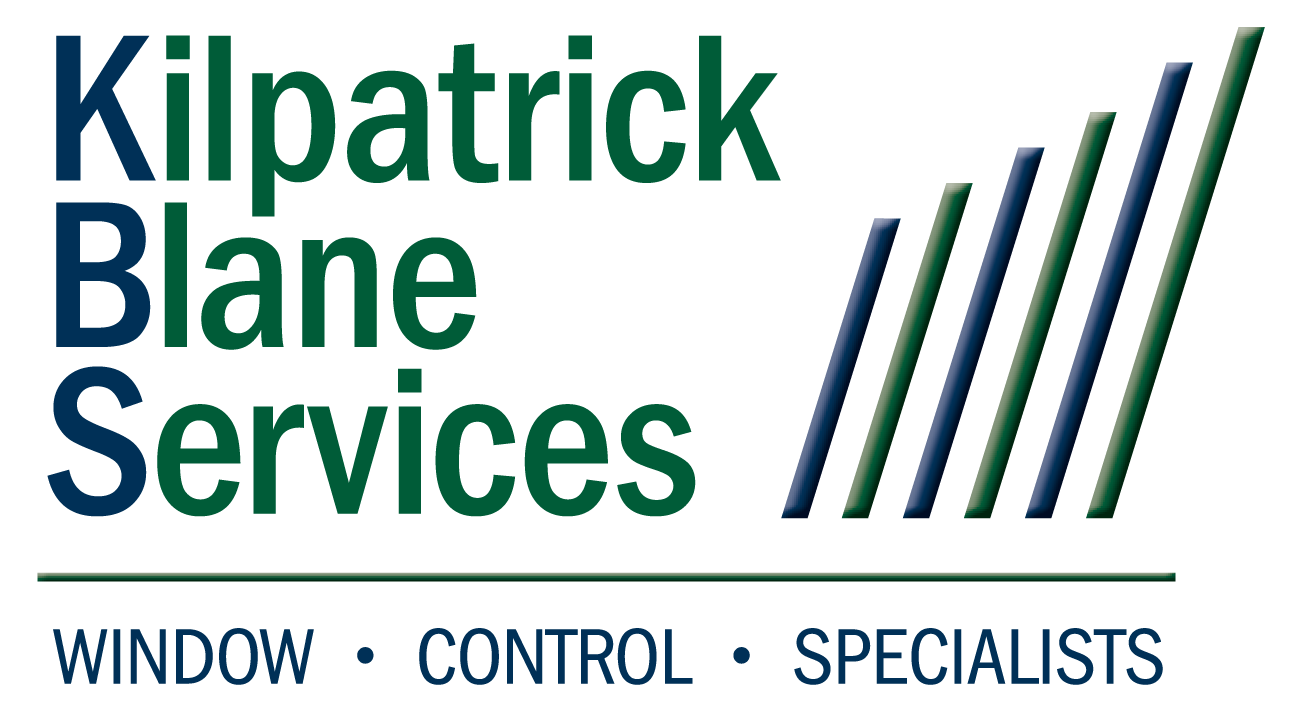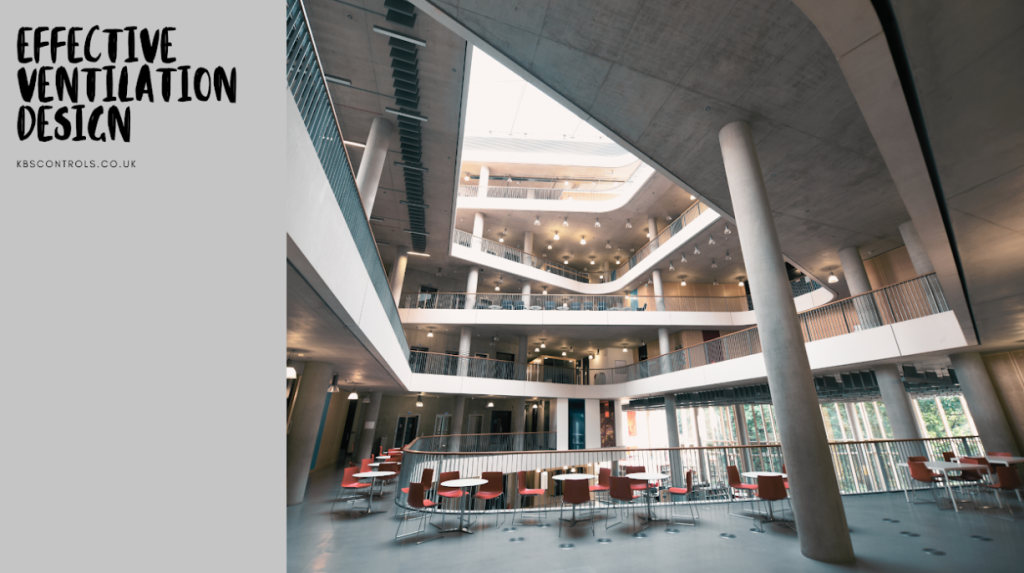
In our last blogs we looked at the science of breathing and the importance of good indoor air quality to support wellbeing and productivity.
We considered the different approaches to ventilating buildings, common challenges, and identified that beautiful Scotland overwhelmingly offers the rare balance of good air quality and temperate climate to get the very best of Natural Ventilation as a solution to provide high levels of occupant satisfaction, while also doing our bit for the climate.
In this blog we’re going to focus on practical design considerations…
How do we put all those factors together, to ensure existing and new buildings perform the way we need them to?
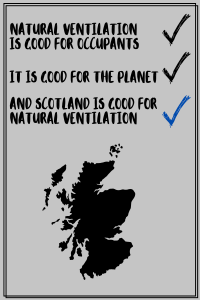
Existing buildings
Most existing buildings depend on manually opening windows for Natural Ventilation. But are they performing the way we need them to?
Suggested first steps to understand building performance in these buildings:
Firstly – do the windows actually open – years of paint can prevent windows being opened – so that’s fix 1. Get those windows serviceable.
Next – let’s try to understand how are our building is actually performing – to see whether further fixes are required.
Many schools have access to sensor data that can give us key indicators on air quality (normally using CO2 as a metric for that) and temperature. Put this together with heating energy consumption data and we’ll have a good shot at understanding how our building is actually performing. Without sensors, surveys of staff and students can give us some less scientific but equally important insights.
What will the data tell us? Well every building is different. If we’re very lucky, we’ll see a building with good air quality levels all year round (we’re aiming for 1200ppm-1500ppm CO2 as a typical benchmark).
We’d also hope to see acceptable levels of temperature and comfort in winter and as few hours of overheating in summer as possible. If these are being achieved alongside good levels of energy performance (particularly heating)…then we’ve cracked it – whatever is working here is a good model for other buildings – celebrate and replicate this!
However, what we know from many studies is that what we actually see in our data and feedback may differ significantly from the ideal!
Typical trends and fixes:
Poor air quality during the day – CO2 levels exceeding 1500ppm. In densely occupied spaces we know that without adequate ventilation CO2 levels quickly build up and can cause wellbeing issues and unnecessary challenges for learning (and teaching). This may be because people can’t open windows (see fix 1) or are waiting too long before doing so;
Feeling drowsy or getting a sense of stuffiness normally means windows should have been opened much earlier.
At the same time, the demand for ventilation changes during the day – a little ventilation earlier normally helps to balance air quality, comfort and energy performance. Waiting to throw windows open to address accumulated CO2 and stale room conditions later normally comes with some trade-offs in terms of quality of the space, thermal discomfort, and potentially unnecessary heating burden.
The advice is similar – ventilate early in a measured way; Waiting until room conditions are too warm before beginning to ventilate, often coincides with warmer outdoor conditions making it more challenging to cool the indoor spaces effectively and perpetuating the problem. When(if) outdoor temperatures begin to exceed indoor temperatures its time to limit openings for cooling and only allow enough outdoor air in to maintain air quality.

Educating the educators
One way of helping occupants to understand the requirements for good room ventilation is to educate them; And normally this goes hand in hand with sensor readings or traffic light indicators.
Helping teaching staff and students to understand when is the best time to open windows, and by how much, is a great way to improve engagement with ventilation, and achieve better results.
But, it is a science that needs some continual attention.
Traffic light systems can change colour often – and this can cause disruption, or make them an annoyance that can become quickly ignored.
Too much opening, or for too long can cause discomfort and unnecessary heating burden in winter. Too little too late can cause poor air quality and overheating.
Modern technologies like automation offer a simple and very effective solution to these challenges allowing the building occupants to get on with their ‘day jobs’ while enabling the building to optimise its own performance. They also enable smart strategies like night cooling and purge ventilation even when the building isn’t occupied.
For existing buildings its often feasible to automate existing windows. Some thought needs to be given to safety, wiring runs and practicalities of existing windows – but performance can be enhanced.
For new buildings, there’s some fundamental guidelines:
- Consider ventilation strategies early in the design
- Conduct modelling to help assess and prove the design
- Automate windows at high level wherever possible (out of reach automation helps limit safety risks and draughts)
- Try to automate on multiple facades or at roof level too to encourage cross ventilation
- Think about noise – quieter actuators make for less noise complaints
- Think about control routines – simply opening and closing windows around setpoints can make for flapping windows and comfort issues, as well as unduly reducing the operational life of actuators. Operate windows in small incremental openings to address small deviations in indoor environment and outdoor conditions and maintain a comfortable balance.
- Think about the potential for night cooling – which windows are in secure locations and able to be operated at night, and by how much. Purge functions prior to building occupation use a similar approach.
- Using intelligent components that give accurate positioning of windows and feedback for security can help take a lot of the guess work out of system optimisation and realising the best solution.
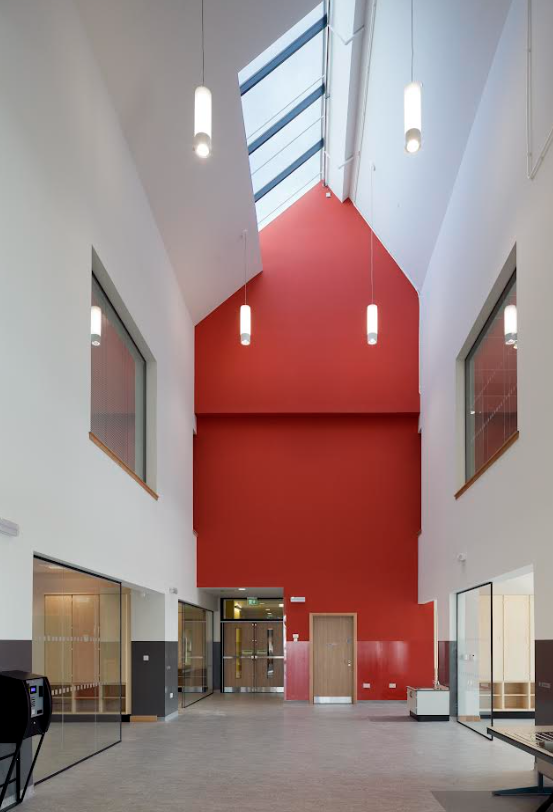
System design and components
Once you’ve decided on important performance factors for your components (eg. Quiet actuators, positional control, feedback, and safety functions) engage a specialist like Kilpatrick Blane to help build a better picture of the overall system makeup – factoring in things like sensor locations, wiring types and routes, controller locations and other important considerations.
The items you’re most likely to see are the actuators, so we can help advise on the smallest, smartest and most cost effective options. Actuators may be coloured or hidden if considered early enough.
Tell us your window sizes, orientations, required opening distance (or limits) and we’ll help find the right actuators and set out the rest of your system needs.
We can help set out budgets and potential cost savings – as well as helping to make sure its delivered right first time with our experienced engineering and installation team.
If you’re lucky enough to already have automation in your building – why not get our engineers to carry out a routine inspection to make sure it’s all running as intended.
So, lets embrace the fabulous Scottish climate and automate Natural Ventilation to help give our teachers and students their very best learning environments.
Want some informal advice or to learn more about services – drop us a line, or check out our project pages for inspiration here.
